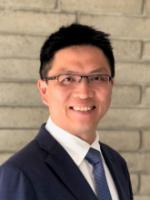
Chung-Chan Hung is Professor of Civil Engineering at National Cheng Kung University, Taiwan. He serves as Adjunct Research Fellow at the National Center for Research on Earthquake Engineering, Taiwan. He received his M.S. in Mechanical Engineering and Ph.D. in Civil Engineering from the University of Michigan, Ann Arbor in 2010. His recent research activities include high-strength RC structures, high performance fiber reinforced concrete materials and structures, performance-based seismic design, and structural retrofitting and strengthening. Dr. Hung was the recipient of the Excellent Junior Scholar Award from the Ministry of Science and Technology, Taiwan (2015 and 2018), the Outstanding Junior Professor in Structural Engineering Award from the Chinese Society of Structural Engineering, and named the Outstanding Reviewer by Engineering Structures, Elsevier (2015). He was also one of the 10 recipients of the 2018 Junior Scholar Innovation Award in engineering and science in Taiwan. Dr. Hung serves on the editorial boards of four journals, and is currently an Associate Editor of Journal of Structural Engineering, ASCE. He has also been a member of the International Scientific Advisory Committee for International Interactive Symposium on Ultra-High Performance Concrete.
High Performance Fiber Reinforced Concrete (HPFRC) is characterized by ductile tensile strain-hardening behavior accompanied by multiple narrow cracks. Depending on the mixing design and the fiber type, the ultimate tensile strain of HPFRC ranges between 0.2% and 8%, which can be up to 100 times greater than that of conventional concrete materials. When HPFRC is under compression, fibers can provide a confining effect, similar to that of stirrups, to enhance the compressive strength and ductility. Current work in my laboratory is aimed at developing multifunctional HPFRC and exploring the potential of using HPFRC to enhance structural sustainability and mechanical performance. In this talk, I will highlight a few studies that my laboratory has conducted in order to advance the state-of-the-art knowledge/technology of HPFRC in terms of self-healing performance, mechanical properties, computational models, and new earthquake-resistant structural members.
Amber Samaniego
a2samaniego@ucsd.edu
